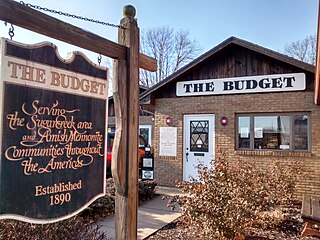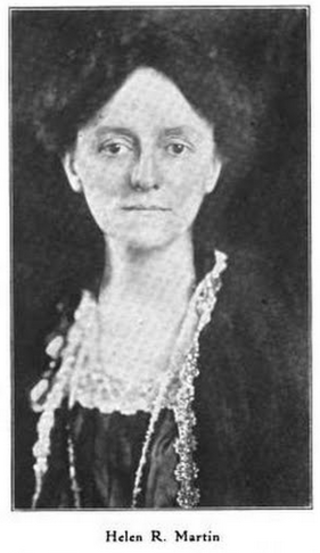Related Research Articles

Witness is a 1985 American neo-noir crime thriller film directed by Peter Weir, and starring Harrison Ford, Kelly McGillis and Lukas Haas, with Jan Rubeš, Danny Glover, Josef Sommer, Alexander Godunov, Patti LuPone and Viggo Mortensen in supporting roles. The film focuses on a police detective (Ford) protecting an Amish woman (McGillis) and her young son (Haas), who becomes a target after he witnesses a brutal murder in a Philadelphia train station.
Genre fiction, also known as formula fiction or popular fiction, is a term used in the book-trade for fictional works written with the intent of fitting into a specific literary genre in order to appeal to readers and fans already familiar with that genre.

A romance novel or romantic novel generally refers to a type of genre fiction novel which places its primary focus on the relationship and romantic love between two people, and usually has an "emotionally satisfying and optimistic ending." Precursors include authors of literary fiction, such as Samuel Richardson, Jane Austen, and Charlotte Brontë.
Young adult fiction (YA) is fiction written for readers from 12 to 18 years of age. The term YA was first used regularly in the 1960s in the United States. The YA category includes most of the genres found in adult fiction, with themes that include friendship, sexuality, drugs and alcohol, and sexual and gender identity. Stories that focus on the challenges of youth may be categorized as problem novels or coming-of-age novels. The boundary between children's and adult literature is flexible, subject to moral and political ideology, and in some cases meaningless.
Paranormal romance is a subgenre of both romantic fiction and speculative fiction. Paranormal romance focuses on romantic love and includes elements beyond the range of scientific explanation, blending together themes from the speculative fiction genres of fantasy, science fiction, and horror. Paranormal romance may range from traditional category romances, such as those published by Harlequin Mills & Boon, with a paranormal setting to stories where the main emphasis is on a science fiction or fantasy-based plot with a romantic subplot included. Common hallmarks are romantic relationships between humans and vampires, shapeshifters, ghosts, and other entities of a fantastic or otherworldly nature.
Inspirational fiction is a sub-category within the broader categories of "inspirational literature" or "inspirational writing." It has become more common for booksellers and libraries to consider inspirational fiction to be a separate genre, classifying and shelving books accordingly. Reasons for this include the increased popularity of inspirational fiction in recent years, and the appeal of inspirational fiction beyond readers of the genre that these books would otherwise be classified in.
Donald B. Kraybill is an American author, lecturer, and educator on Anabaptist faiths and culture. Kraybill is widely recognized for his studies on Anabaptist groups and in particular the Amish. He has researched and written extensively on Anabaptist culture. He is Distinguished Professor Emeritus at Elizabethtown College and Senior Fellow Emeritus at Elizabethtown's Young Center for Anabaptist and Pietist Studies.
A Christian novel is a Christian literary novel which features Christian media genre conventions.
Amish Mennonites came into existence through reform movements among North American Amish mainly between 1862 and 1878. These Amish moved away from the old Amish traditions and drew near to the Mennonites, becoming Mennonites of Amish origin. Over the decades, most Amish Mennonites groups removed the word "Amish" from the name of their congregations or merged with Mennonite groups.

The Budget is a US weekly newspaper published in Ohio for and by members of various plain Anabaptist Christian communities including the Amish, Amish Mennonite, Beachy Amish, as well as plain Mennonite and Brethren communities. The Budget began publishing in 1890. The paper was known as The Weekly Budget up to the time the Royal Printing Company began publishing it in 1920.

Helen Reimensnyder Martin was an American author.

Beverly Marie Lewis is an American Christian fiction novelist and adult and children's author of over 100 books.
Contemporary romance is a subgenre of romance novels, generally set contemporaneously with the time of its writing. The largest of the romance novel subgenres, contemporary romance novels usually reflect the mores of their time. Heroines in the contemporary romances written prior to 1970 usually quit working when they married or had children, while those novels written after 1970 usually have, and keep, a career. As contemporary romance novels have grown to contain more complex plotting and more realistic characters, the line between this subgenre and the genre of women's fiction has blurred.

The Amish, formally the Old Order Amish, are a group of traditionalist Anabaptist Christian church fellowships with Swiss German and Alsatian origins. They are closely related to Mennonite churches, a separate Anabaptist denomination. The Amish are known for simple living, plain dress, Christian pacifism, and slowness to adopt many conveniences of modern technology, with a view neither to interrupt family time, nor replace face-to-face conversations whenever possible, and a view to maintain self-sufficiency. The Amish value rural life, manual labor, humility and Gelassenheit.
Young adult romance literature is a genre of books written for teenagers. As defined by Romance Writers of America, a romance novel consists of a central love story and an emotionally satisfying ending. Early young adult romances feature a teenage protagonist, who is typically female, white, and middle-class, while books in the twenty-first century include a wider variety of protagonist.

Kathleen Fuller is an American writer, specializing in Christian and Amish romantic fiction. She was born in New Orleans, Louisiana, grew up in Little Rock, Arkansas and currently resides in Geneva, Ohio with her husband, James Fuller, and three children.

The Amish faith is a highly traditional Christian tradition in the Anabaptist branch of the Reformation. It is practiced almost exclusively in the United States and Canada with large settlements in Pennsylvania, Ohio, and Indiana. Because the traditional beliefs of this religion can conflict with the ideals of mainstream culture, the role of Women in Amish society is visibly different from that of women in the surrounding communities.
Gay romance is a genre within gay literature and romance fiction focused on same-sex characters who fall in love and have a homosexual or homoromantic relationship. The genre has met with increasing acceptance and sales from the 1980s onward.
Wanda E. Brunstetter is a novelist in the Amish romance genre, with more than 10 million books sold. Her books have been on the New York Times Best Seller list. Brunstetter is based in Washington.
Mennonite literature emerged in the mid-to-late 20th century as both a literary movement and a distinct genre. Mennonite literature refers to literary works created by or about Mennonites.
References
- ↑ Athitakis, Mark (July 25, 2001). "A Romance Glossary" Archived 2011-06-10 at the Wayback Machine . SF Weekly. Retrieved June 18, 2020.
- 1 2 Miller, Lisa (2 December 2010). "Books: Amish Romance Novels". Newsweek . Retrieved 9 July 2013.
- 1 2 Kennedy, Deborah (1 September 2012). "Amish fiction: Put a bonnet on it". Salon . Retrieved 9 July 2013.
- ↑ Riess, Jana (2010). "Agents Help Christian Novelists Success in Soft Market". Publishers Weekly . 257 (10): 8.
- 1 2 3 4 5 Weaver-Zercher, Valerie (21 March 2013). "Bonnet Rippers: The Rise of the Amish Romance Novel". Los Angeles Review of Books . Retrieved 7 January 2015.
- 1 2 Weaver-Zercher, Valerie (6 June 2013). "Why Amish Romance Novels Are Hot". The Wall Street Journal . Retrieved 9 July 2013.
- ↑ Reffner, Julia M. (7 November 2013). "Christian Fiction Sees the Light". Library Journal . Archived from the original on 8 January 2015. Retrieved 7 January 2015.